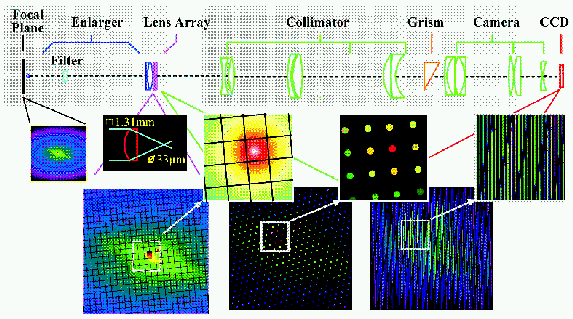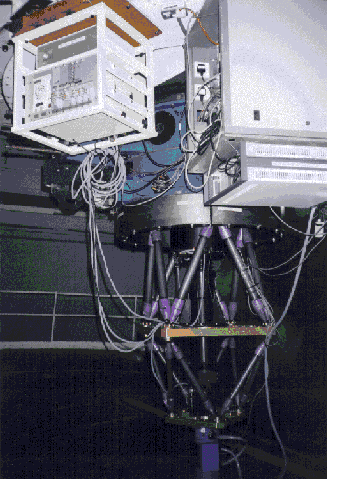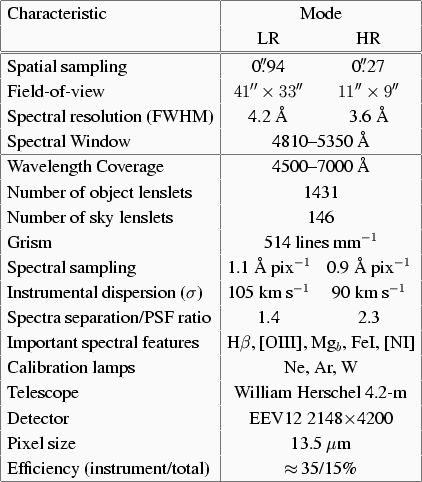
Optical design of SAURON.

Below is a description of some of the work I have done and some of the projects I have participated in regarding instrumentation. Unfortunately, lack of time prevents me from putting on the web everything I am involved in, but my publications list (which is up-to-date) should alleviate this problem somewhat.
As you can see, my involvement in instrumentation has so far concentrated mainly on the SAURON spectrograph... but I am always on the look-out for new instruments providing innovative ways of probing galaxies!
| SAURON | MONICA |
SAURON:
As part of the
SAURON project, a collaboration with a core of 12 members, I have
been involved in the developement and operation of the SAURON
spectrograph (Spectrographic Areal Unit for Research on Optical
Nebulae), which is mounted on the
William Herschel Telescope (WHT) in La Palma. SAURON is an
integral-field spectrograph (IFS) based on the
TIGER principle and uses a lenslet array. It has a large
field-of-view (the largest of any IFS with similar spectral
resolution), high throughput, and allows simultaneous sky
subtraction. Its design is optimized for studies of the stellar
kinematics, gas kinematics, and line-strength distributions of nearby
early-type galaxies. This is achieved by simultaeously observing
(spatially and spectrally) the H_beta, Mg_b, and FeI absorption lines
(stellar kinematics and linestrengths) and the H_beta, [OIII], and
[NI] emission lines (gaseous kinematics and emission
line ratios). Extensive data reduction and analysis software called XSAURON
was developed to obtain fully calibrated spectra and the associated
kinematic and line-strength measurements. A pipeline called PALANTIR
is also available to reduce the data in an automated fashion. The main
goal of SAURON is to study the dynamics and stellar populations of early-type galaxies (ellipticals,
lenticulars, and early spiral bulges).


A paper describing the design and performance of SAURON has appeared in Bacon et al. (2001). You can also download it here in preprint format.
MONICA:
During my undergraduate years at the Université de
Montréal, I worked with the
Astrophysics Group. I spent my first summer writing data reduction
software for MONICA, a near infrared camera (MOntréal Near
Infrared CAmera), and analysing images of quasar fields to study their
environment. The observations were obtained at the Observatoire du Mont
Mégantic and the work was done under the supervision of Prof. Daniel Nadeau
(Université de
Montréal).
To go back to my Home Page, click here:
![]()
This page was last modified on May 10 2005